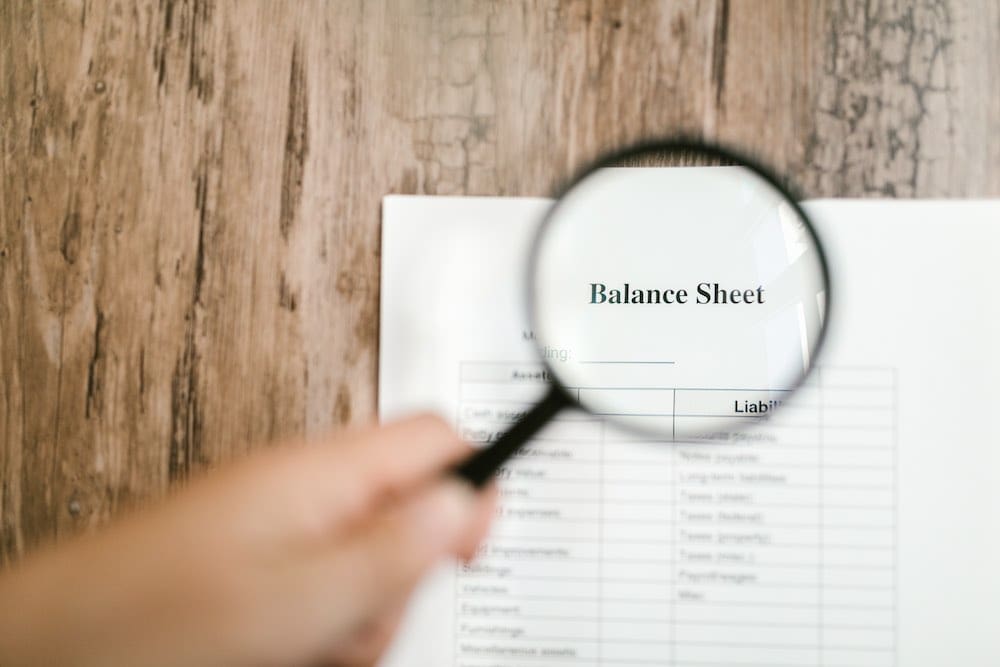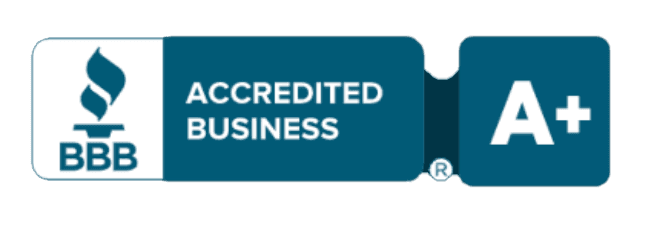What is a Balance Sheet vs. Income Statement?

Balance sheets and income statements are indispensable financial tools for all business owners. What should businesses know about the balance sheet vs. income statement? The two complement each other in tracking vital financial metrics such as net income, expenses, profitability, and more. However, there are differences between the two documents. Understanding these statements can be the first step in making better financial decisions and improving your business performance. This guide provides an extensive overview of the balance sheet vs. income statement to help you understand what they mean for your business. What is a Balance Sheet vs. Income Statement? Financial statements like balance sheets and income statements give you insights into your business’s financial performance and health. Usually, a balance sheet represents what a business owns and owes at a specified time. An income statement explains a company’s total revenue and expenses. Accountants prepare the two statements from financial records. Businesses use them to determine how well they are doing, their worth, and the areas that require improvement. When combined, the balance sheet and income statement provide a better knowledge of the overall financial position. What is a Balance Sheet? A balance sheet provides a clear view of its financial position at a specific time. Its key components are assets, liabilities, and shareholder’s equity. Assets represent what a business owns, including cash, property, trademarks, and equipment. Liabilities include everything the company owes, such as short-term and long-term debts. Stakeholder’s equity represents the remaining assets after settling all liabilities. Overall assets are equal to the summation of the total liabilities and shareholder’s equity. Like any other financial statement, the structure of a balance sheet will vary based on the company. Assets = Liabilities + Shareholder’s equity Usually, businesses create balance sheets every fiscal quarter and at the end of the fiscal reporting year. You can track company performance since inception, including all transactions, acquired assets (and their current valuations), and accumulated debts, all in one statement. Let us look at the components of a balance sheet in detail. Assets Assets in a balance sheet represent what your business owns at a specified time. There are two classifications of assets, namely current and long-term or non-current assets. The current ones are those that are effortlessly convertible into cash. Types of assets include: Cash and cash equivalents (Stocks and bonds) Inventories Money in the bank Accounts receivable Short-term investments Prepaid expenses Conversely, it is not easy to convert non-current assets into cash. In other words, non-current assets are assets that you do not expect to generate revenue within the accounting year. Non-current asset examples are: Properties such as land and buildings Intangible assets like patents, copyrights, and trademarks Machinery and equipment Long-term investment Liabilities A company’s liabilities are what it owes to creditors and vendors. Just like assets, there are two categories of liabilities—current and long-term. The current ones are those that are due within one accounting year. Current liabilities may include: Accounts payable Accrued expenses Employee wages Taxes Long-term liabilities are a company’s financial obligations that are due more than one accounting year in the future. Long-term liability examples include: Mortgages Loans Payable bonds Dividends payable Stakeholder’s Equity Stakeholder’s equity refers to the net value of a business or the money left over for stakeholders, owners, and executives, after paying all liabilities. It equals the sum of the total assets minus the total liabilities. Retained earnings from treasury bonds, stocks, capital investments, and gains are also part of stakeholders’ equity. Profitable businesses have positive retained earnings, while those experiencing losses have a negative figure. Equity can help banks and financial institutions determine how solvent your business is and its ability to meet financial obligations. Lenders will assess this before approving you for business loans. What is an Income Statement? The income statement summarizes the financial health of your business during a specified period. Accountants also call it a profit and loss (P&L) statement. This statement categorizes a business’ revenue and expenses, with the difference between the two representing profit or loss. An income statement helps business owners know whether they generate profit or loss during the statement period. The period could be monthly, quarterly, or yearly based on the business needs and personal preferences. A company’s income statement has two parts. Operating portion – Includes revenue and expenses that come directly from the core operations. It may include the revenue obtained from selling products and services or costs incurred from product development. Non-operating portion – Includes revenue and expenses derived from activities that aren’t closely linked to core operations. Examples include profit from investments, dividend income, or expenses like interest payments and asset write-downs. In addition, there are two methods of documenting revenue and expenses in an income statement. Single Step Income Statement The single-step income statement uses a simplified format to report net income. It uses a one-step subtraction method. To use it, you subtract all expenditures from the total revenue. Net income = (Revenues + Gains) – (Expenses + Losses) Most small businesses have less complicated core operations and accounting and prefer the single-step income statement. Multi-step Income Statement This statement is comprehensive compared to a single-step statement. It utilizes several equations to determine a company’s net sales. There are three formulas or steps used in the multi-step statements. Gross profit = Net income – Cost of products sold Operating income = Gross profit – Operating expense Net income = Total operating income + Non-operating income Large and complex companies often use this option since they have many different sources of revenue, employees, and activities. Small businesses usually do not need to take this approach. Balance Sheet Example Here is an example of a balance sheet from Facebook. It is a condensed statement from the last quarter of 2020. Facebook has among the healthiest balance sheets, with the total assets adding up to $159,316,000. That is enough to clear four times the total liabilities, which add up to $31,026,000. The total stakeholder’s equity is impressive, totaling $128,290,000. From this
What Is Net Income Formula and How to Use It

Net income is one key metric that you can use to assess your business’s financial health. It is the bottom line on your income statement, also called a Profit & Loss Statement (P&L), and it tells you how much money you have remaining after deducting your costs and operating expenses from your total sales. What Is Net Income? Net income can be compared to “take-home pay” for an employee. It’s the amount of money remaining after taxes, insurance, and other expenses are deducted from your total pay or gross income. Similarly, a business’s net income is the amount of money remaining after deducting all business expenses, including wages, interest, product costs, operation costs, and taxes. Net income, also known as the bottom line, net earnings, or net profit, appears at the bottom of income statements. Generally, a healthy, growing business will have positive net incomes and increase consistently. In other words, the more you increase revenue and decrease expenses, the healthier you are. The net income or net loss of your business may also show up on your balance sheet as retained earnings. Retained earnings are the amount of money that is held (not distributed to shareholders) to sustain and grow the business. How Do You Calculate Net Income? The net income formula helps calculate the net income of either an individual or a business. Calculating net income is fairly straightforward for individuals. You take the total amount earned (gross income) and then deduct all expenses, such as interest payments and taxes. It is a little more complicated for businesses. Net Income Formula Businesses can use the net income formula to calculate net income for any timeframe. There are two primary ways to calculate net income: revenue and expenses or gross profit and expenses. We’ll go over each net income formula and how to use them. Total Revenue Total Revenue = Quantity Sold * Price – Discounts Cost of Goods Sold COGS is the cost of the product or the service being delivered. If you have a t-shirt company, it is the wholesale cost of the t-shirt, plus freight, labor, and printing costs. If you provide consulting services, it is the cost of labor to provide the consulting. Gross Profit Gross profit represents the profit made on selling the product or service. This provides insight into whether your pricing brings you the desired profit on each sale. Gross Profit = Revenue – Costs of Goods Sold Operating Expenses Operating expenses are running the day-to-day business, including advertising & marketing, rent, payroll, insurance, software, website, postage, auto expenses, meals, travel, and more. These are the below-the-line (Gross Profit) costs. Net Income Net Income = Gross Profit – Operating Expenses It’s important to note that net income can be a net loss. If your operating expenses exceed your gross profit, you have a net loss. When your operating expenses are less than your gross profit, you have a net income. Often, when a business is in start-up mode, a net loss is not surprising. Although a net loss has a tax benefit, it doesn’t lead to a sustainable or scalable company without further investment. It’s also important to note that net income may include revenue that is not from your core business activities. For example, if your business owns real estate and rents out part of it or gains royalties from a past partnership, this is generally referred to as non-operating income. Business Net Income Example Let’s look at a hypothetical business scenario to understand the net income formula fully. Marcus’ Archery, a company specializing in manufacturing and selling archery equipment, wants to calculate its net income for the fourth quarter. Here are the necessary figures to calculate net income from its accounts: Total Revenue: $20,000,000 Costs of goods sold (COGS): $8,750,000 Rent: $150,000 Utilities: $40,000 Payroll: $250,000 Advertising: $70,000 Interest expense: $70,000 According to the net income formula, Marcus’ Archery first needs to calculate Gross Profit. You would do this by subtracting the costs of goods sold, including direct labor costs, from the total revenue. $20,000,000 (Total Revenue) – $8,750,000 (COGS) = $11,250,000 (Gross Profit) $150,000 (Rent) + $40,000 (Utilities) + $250,000 (Payroll) + $70,000 (Advertising) + $70,000 (Interest Expense) = $580,000 (Total Expenses) Marcus’ Archery can now calculate its net income with all these results. You use the net income formula to subtract total expenses from gross income to do this. $11,250,000 (Gross Income) – $580,000 (Total Expenses) = $10,670,000 (Net Income) The fourth quarter’s net income for Marcus’ Archery is $10,670,000. Cash Flow vs. Net Income These are simplified explanations of how to calculate net income. However, net income does not equate to how much money is in the bank. We often hear questions like, “I made $100,000 this year, but why don’t I have $100,000 in the bank.” That is because cash flow is very different from net income Factors like credit cards, business loans, owner’s payments, or investment income affect the money in the bank but aren’t factors in net income. You can learn more about cash flow vs. profit and how to use cash flow for decision-making in our blog. Individual Net Income Example We focus on business bookkeeping and accounting at xendoo. However, looking at an individual net income example can help you better understand how it differs from calculating the net income for a business. Let’s consider Nancy, an employee at a local ski shop. Nancy receives her paycheck every two weeks with gross pay of $4,500. She also receives $200 in interest and $600 in equity as her other forms of income. She then pays all her taxes, including: Social Security taxes ($279) Federal taxes ($450) State taxes ($163.91) Medicare taxes ($65.25) Insurance ($280) These are usually automatically deducted from your paycheck. After all these deductions, Nancy has a net income of $4,061. Here are the exact steps to calculate it. Gross Income – Total Expenses = Net Income For Nancy, the math would be like this: $4,500 (Gross Pay) + $200 (Interest)
What Is the Bad Debt Expense Formula?

When a small business makes sales on credit, there’s a chance of having bad debt expenses. Most businesses use the bad debt expense formula to account for them. Even the customers with the highest credit record can go bankrupt and fail to pay their debts. Tracking and recording these debts gives you an accurate picture of your financial standing. In this post, we will dig deeper into how to calculate bad debt expenses and what they mean for your business. What Is a Bad Debt Expense? When a company sells goods or services on credit, the risk of customers failing to pay the amount owed is always there. The longer they take to clear the payment, the higher the chances of not paying at all. Bad debt expenses are the part of accounts receivable that a company considers non-collectible. In other words, you were unable to collect payment for your product or service. Accounts receivable (AR) refers to the funds due to a company for products or services. It is the amount of money that customers owe you. After multiple unsuccessful collection attempts, businesses record bad debt expenses in the general ledger as a negative transaction. They are part of the operational costs under the income statement. When Do Bad Debt Expenses Happen? Bad debt expenses occur when a customer cannot pay outstanding bills for goods or services purchased on credit. Customers can fail to pay their bills due to financial difficulties or a disagreement over the delivered products or services. For instance, a customer may dislike how a printing order turns out and refuse to pay. If they make no effort to negotiate the payment terms for an extended period, you might consider writing their invoices as bad debts. Writing off these debts helps you avoid overstating assets or revenue while giving you an accurate picture of your company’s financial position. What Is the Bad Debt Expense Formula? Accounting for your debts is good business practice. The bad debt expense formula accounts for the total bad debts from past sales. There are two ways to do this: Direct or write-off method Allowance method Let us look at each technique in detail. Direct or Write-off Method When many of your clients pay off their bills, and you have fewer bad debts remaining, you might opt to write them off one at a time. This mostly happens when the invoice surpasses the deadline, and it becomes clear that the customers won’t pay. The IRS states that you should only write off bad debts after you have made all possible attempts to recover the amount without success. So, if you cannot contact the buyer or develop a repayment plan with them after numerous attempts, it might be time to write off the bad debts. In such a case, you will make a simple transaction record in your ledger account where the bad debt expense equals the account receivable value. The write-off method has no formula since actual values are recorded as expenses in your book of accounts. The write-off method may seem like an easier way to deal with doubtful debts than the allowance method. For one, you only have to record two transactions. Another upside is that it reduces the tax burden because you can write off the bad debt expenses from your taxable income. It also gives an exact amount of bad debts rather than an estimate. However, there are downsides to using the direct write-off method. It fails to uphold the Generally Accepted Accounting Principle (GAAP) which states that businesses must recognize expenses during their incurred period. With this method, you might not recognize bad debt expenses until the next accounting period. Theoretically, this is not the correct way of identifying bad expenses. Another downside is that, since you record it as a credit to accounts receivable, it can cause balance sheet inaccuracies. Allowance Method With the allowance method, you account for bad debts ahead of time. If you do a lot of product or service deliveries on credit, you’ll want to use the allowance method. Also known as allowance for bad debts, this method sets aside a percentage of overall credit sales for bad debts. Using your historic or past data on bad expenses, you predict the percent of future bad expenses from all credit sales. The allowance is always an estimate because you are trying to predict the future based on the past. However, it can help you plan ahead for bad debt expenses and budget appropriately. You can use the bad debt expense formula to estimate the amount that you need to set aside. Percentage of bad debt = total bad debts/total credit sales For example, assume your business has been operating for several years and the overall credit sales in the last accounting year were $500,000. Out of the total credit sales, $50,000 ended up being non-collectible. You’ll want to account for these bad debts prior to the next accounting year by setting up an allowance. Here is how to do it. Percentage of bad debt = $50,000 (total bad debt expenses) / $500,000 (total credit sales) That gives you a bad debt allowance of 10%. If this estimate is practical for future unpaid invoices, create an allowance for doubtful accounts at 10% of this year’s anticipated credit sales. If your business is relatively new, the allowance method may not be accurate or reliable. It also will not work if you have a massive non-recoverable debt that is considered an outlier. The large amount can skew your bad debt allowance. How to Record Bad Debt Expenses Keeping a record of bad debts helps maintain balanced statements while allowing you to make better financial decisions. Nonetheless, you can only record bad debts if you use accrual-based accounting. Those using cash accounting principles cannot do this since they have no recorded bad debt to undo or balance. Recording bad debts using the direct write-off method involves debiting the expense account and crediting the accounts receivable with
11 Best Receipt Apps For Businesses

Receipts play a surprisingly important role in running a business. Whether you track receipts to reimburse employee expenses or to prepare for a possible audit, you should keep track of them with one of these best receipt apps. What is a receipt scanner app? A receipt scanner app takes a photo of your receipt and creates a digital copy. This makes it easy to retrieve it from a digital filing system. Almost all receipt scanning apps work the same way. They use Optical Character Recognition (OCR) technology, a process that scans physical documents and creates digital versions of them. With this process, you can limit manual data entry. Instead of using a scanner, you download the app on your phone and use your camera to take a photo of the receipt. The app collects and stores your receipt information, so you can easily retrieve it when you need to, by filtering and searching by keyword. Why do businesses need receipt apps? The IRS recommends that you keep certain financial records for at least three years after filing a tax return. That can include receipts, especially those for purchases larger than $75. No one wants to keep a three-year stockpile of paper receipts. It can be a pain to organize and easy to lose track of paper copies. You could accidentally throw them away while cleaning. Paper receipts can fade and ink can smear. Also, they are prone to damage due to climate, degradation, and other factors. When you regularly scan and store your receipts: You will save time when it comes to tax filing. You won’t spend time looking for and sorting through a huge pile of receipts. Your business won’t miss on valuable tax deductions. You’ll easily know where most of your money goes every month. Storing your receipts online is a better way to manage them. Let’s take a look at some of the best receipts apps, their features, pricing, and more to help you choose the right one for your business. QuickBooks – the most flexible with advanced features Expensify – best for scanning receipts on the go Dext – best for financial documents Concur – for enterprises with global travel Keeper Tax – for freelancers and independent contractors Wave Receipts – best free app for self-employed Rydoo – best for startups FreshBooks – for early stage businesses Abukai – for solopreneurs that travel internationally Zoho Expense – most affordable option for multiple users xendoo – for when you want an expert to manage it for you 1. QuickBooks – the most flexible with advanced features You can use QuickBooks to scan receipts, but it does much more than that. QuickBooks is accounting software that has other features that business owners may need. For example, you can use it to create expense reports, set up payroll, manage invoices, and more. How to scan receipts with QuickBooks You can scan receipts when you download the QuickBooks app. Create a QuickBooks account Go to Menu Tap on Receipt Snap Open the Receipt Camera and take a photo of your receipt Click to use this photo Tap on Done After uploading the receipt, you can view it when you log in to QuickBooks. QuickBooks is a flexible option for businesses that may need features outside of receipt scanning. If you are already using it for your accounting, you can also use it for receipts. But, it integrates with many other receipt apps. You have the option to use Quickbooks for general accounting needs while leveraging other apps on this list that specialize in receipts. However, QuickBooks doesn’t put your accounting on auto-pilot. It requires some accounting knowledge, effort, and time to operate. So, if you don’t know how to do your bookkeeping and other financial tasks, you may end up making mistakes. Luckily, you can hire bookkeeping professionals to help you. Pricing You can test out QuickBooks for free with a 30-day trial. Plans start at $25/month for businesses and go up to $180/month. Freelancers and independent contractors get a discounted price of $15 per month. Prices may vary depending on if they offer a discount for the first three months. *Some xendoo plans get access to QuickBooks (plus a bookkeeper to manage it for you). 2. Expensify – best for scanning receipts on the go Do you work remotely or travel more often for meetings? Undoubtedly, tracking your receipts and getting everything categorized and classified might be a huge hassle. Fortunately, the Expensify app makes it easy to keep receipts without stuffing them into your luggage while traveling. Expensify is first and foremost a mobile app. It is easy to use and allows you to scan unlimited receipts, track mileage, and more. Its SmartScan feature automatically scans and enters the details on its own, saving you time and trouble. However, it’s not great if you want to scan and view receipts from your desktop. How to use Expensify To scan receipts with Expensify, follow these simple steps. Open the app and take a SmartScan photo using the mobile app Tap on the green camera and point it to your receipt Take a photo Tap on + at the top right of the app to manually enter time, distance, and transaction details Although Expensify does not have as many features as Quickbooks, it is solely designed for managing expenses. Businesses choose Expensify because of its advanced expense management capabilities, like the ability to connect it with a corporate Expensify card. In addition, you can integrate Expensify with your accounting software. It is compatible with other apps such as QuickBooks, NetSuite, Xero, and Sage. Pricing You can use Expensify for free if you have less than 25 receipt scans per month. For more, it starts at $4.99/month for individuals, and increases in price depending on if you add users or get an Expensify card. 3. Dext – best for financial documents With Dext, you can scan receipts through your desktop, mobile device, or email. It was previously known as Receipt
Learn When You Should Outsource Your Accounting

Business owners have a ton of demands on their plate, from bringing on the right staff members to marketing their products and working to improve the customer experience. But as your business starts to take off, it can leave you with a difficult choice. Should you focus on growing your core business or continue to focus on the administrative side, like managing your accounting and bookkeeping needs? When your business was small, it was easy to handle both. But now that you’re growing, it may be more difficult to adequately cover your administrative tasks. Getting behind in your books can leave you frantically preparing for tax season. Without accurate financial records, it can be harder to secure funding and prepare for the future, too. Outsource accounting services can help you stay up-to-date on your books, compliant with regulations, and firmly in control of your company’s financial future. With that in mind, here are some of the reasons why you should consider partnering with an online accounting firm. Scaling as Your Business Grows Your profitability depends on your ability to generate revenue and sustain growth over time. Outsource accounting services can help you accomplish this, providing a set of benefits that can help to cover back office responsibilities as you and your team focus on your core business tasks. Specialized Skills for Every Step of Your Journey While in-house accountants tend to be generalists, online bookkeeping firms can offer a specialized experience for every phase of your business journey. Outsource accounting firms can often provide experience in unique areas such as: Personal financial planning and assistance Forensic accounting Managerial accounting IT auditing Non-profits Tax preparation Additionally, the financial professionals found at today’s top firms often have experience in your respective industry, providing actionable advice that can optimize your company at every step of your journey. Tax Planning The specialized skills of an outsourced accountant typically include experience in tax planning and preparation. Outsource accounting services can not only ensure that your company has set aside sufficient funds to pay your annual income tax, but they can also help you to take advantage of the existing tax code to enhance profitability while staying in compliance with regulations. This can be crucial for growing businesses. As your business expands, you may discover that rising revenues and a changing customer base can place you in unique tax situations. These needs can best be addressed by a professional accountant. Outsource accounting teams can enable you to navigate the confusing world of tax law. Financial Reporting and Planning Growing businesses often rely on small business loans for tasks like: Increasing inventory Hiring new employees or contractors Investing in new technologies Expanding retail or office space Other overhead costs But in order to secure a small business loan, most lenders will want to see the basic data about your financials. If your books are “a little behind,” this can jeopardize your ability to secure the necessary funds to grow your business. Top-quality outsource accounting services can provide catch-up options designed to bring your books completely up-to-date. Best of all, with accurate reporting, you’ll be in a better position to secure additional funds as your business expands. Taking Your Time Back Your time is too valuable to spend on your books. And accounting doesn’t usually fall under your team’s core competencies. A core competency is a unique skill or advantage that is ultimately responsible for your company’s growth. Any business process that’s not a core competency should be outsourced, allowing your team to focus on their respective areas of specialty. That’s why bookkeeping and accounting rank among the top tasks to outsource for growing companies. Outsource accounting services can help you with these administrative processes so that you and your team can stay focused on your core business. Here are just a few of the additional benefits that you can expect when you partner with high-quality outsource accounting services: Saving Time While Staying in Control Running your company is job number one. Relying on outsourced online bookkeeping services to handle your books can liberate you from the tyranny of administration and put you back in a position to make data-driven decisions. Some business owners are reluctant to do this since it naturally means surrendering control. But letting someone else handle your books can actually mean greater control over your company—not less. For instance, most accounting firms rely on the latest cloud-based technology, offering access to your financial data 24/7 from anywhere in the world. And at xendoo, our professional team is never more than a phone call, text message, or email away. You save time and benefit from up-to-date, easy-to-access information about your company’s cash flow and financial forecasting, giving you confidence that you simply can’t match by juggling your own spreadsheets and flow charts. Keeping Your Employees Focused Of course, you may already be wise enough to delegate these responsibilities to another team member. But think about how much more your team could accomplish if they weren’t spending time clicking around in QuickBooks. Your office staff could divert their attention to revenue-generating tasks as: Social media management Marketing Contacting customers Pursuing new leads Negotiating with vendors Outsource accounting services reduce the burden on your staff as a whole, allowing you to direct your team’s attention to the key processes that go into running your business. Spending Less Time Hiring New Staff Members When you pursue outsourced accounting for small business needs, you won’t have to interview, hire, and onboard your own staff accountant. That means you’ll spend less time assembling a job description, posting a job ad, reviewing resumes, onboarding a new employee, setting up benefits, or securing an office space. With an outsourced accounting firm, you can rely on a partner that will be around for the long term. You’ll benefit from the reliability of a dedicated team that understands your needs and provides ongoing support. A Fast, Reliable Turnaround What happens if your in-house accountant needs to take a sick day or goes on
Cash vs. accrual accounting: Which is right for your business?

In accounting, there are two primary methods—accrual and cash basis. The main difference between accrual vs. cash accounting is in how and when you record income and expenses in your books. Each accounting method has advantages and disadvantages. If you’re not familiar with accrual vs. cash basis accounting, we’ll help you understand what they mean, how they differ, and how they impact your finances. We’ll also briefly go over a third option—modified accrual accounting—a hybrid of the two. Table of contents Choosing the right method for your business What is cash basis accounting? What is accrual accounting? Differences between accrual vs. cash Modified accrual (hybrid accounting) How xendoo helps with accounting Choosing the right method for your business To help you decide between accrual and cash accounting—or a hybrid of the two, you can use the comparison table below. Cash Modified Accrual Simplest accounting method Flexible accounting method Most complex accounting method Best for service-based businesses Best for companies that carry some inventory Best for companies that carry a lot of inventory Small businesses Growing businesses Large and public companies Some business owners start out using cash basis accounting, then switch to hybrid or accrual accounting. You can always switch later, but you may want an accountant to help you transition. We’ll go into each method in more detail below to help you decide. What is cash basis accounting? Cash basis accounting, the simpler of the two accounting methods, records transactions when cash changes hands. In other words, you report income when you receive cash and record expenses when you pay your bills. Since you only record transactions when you receive money, cash basis accounting doesn’t include accounts payable and receivable. You don’t account for sales customers made on credit (receivable) or business purchases you made on credit (payable). Benefits of cash basis The cash basis accounting method is a popular choice for small business owners because it’s simple. Here are other benefits of cash accounting: It’s a straightforward approach that gives you tax-ready finances. Managing taxes and cash flow can be easier because you pay taxes when you receive money, not when you send invoices. Limitations of cash basis It’s not as accurate as accrual accounting It may not provide meaningful insight into your profitability. Some businesses can’t use cash basis accounting because it doesn’t meet Generally Accepted Accounting Principles (GAAP). Cash accounting example Let’s look at an example to help you understand the cash accounting method. Say your company sells a product to a customer in December 2022, but you don’t receive payment until January 2023. Even though you sold the product in December of 2022, you’ll record the transaction as a sale in January 2023, when you receive payment. That “sale” becomes part of 2023 for tax and reporting purposes, even though you technically made the sale in 2022. What is accrual accounting? In accrual accounting, you record income (sales) and expenses when the transaction occurs, regardless of when the payment happens. Simply put, you record every transaction twice through debits and credits. This gives you a more accurate picture of your gross profit and your net income. Admittedly, accrual accounting is more complex and requires more time than cash basis accounting. However, it gives you a clear view of your profitability to help you make informed business decisions. Often, if you’re looking to exit or sell your company, you must use accrual accounting. Benefits of accrual accounting Many companies choose the accrual accounting method because it’s more accurate than the cash basis method. Here are the main benefits of accrual accounting: It gives you a thorough and accurate record of your company’s profitability and financial health. Accrual accounting follows GAAP, and publicly traded companies must use it. It’s easier to do financial projections and reporting like cash flow statements. Downsides of accrual accounting It requires more detailed record-keeping and can be difficult if you don’t have accounting experience. It’s a more time-consuming method because you need to match up the numbers within set time periods. With accrual, you pay tax on all your business’ sales, regardless of whether you’ve actually received the money for the transaction yet. Because it’s more complex, many businesses use online bookkeeping and accounting services to handle accrual accounting for their business. Accrual example Let’s use the example from earlier but record it with accrual accounting. Your company sells a product to a customer in December of 2022, but you don’t receive payment until January 2023. Using the accrual method, you’ll record the sales transaction as revenue in December. You’ll also include the transaction when you file your 2022 business income tax return. Additionally, you would ensure the cost of the product (COGS), regardless of when you pay for it, is also included in December. This provides accurate gross profit to better understand your pricing’s efficiency. Differences between accrual vs. cash basis We’ve talked about some of the top differences between cash and accrual accounting. The comparison chart below recaps what we’ve highlighted so far. Cash Basis Accrual Records transactions when you receive money or when you pay money (expenses) Records transactions when they happen, regardless of when you receive or make payments Does not include accounts payable and receivable Uses accounts payable and receivable Is simple, but not as accurate Is complicated, but more accurate Cash flow is simpler to track Cash flow may need more adjustments Taxes are due on the money you receive during the tax period Taxes are due when you earn income during the tax period Modified accrual (hybrid accounting) Modified accrual accounting is a hybrid method that combines parts of cash basis and accrual accounting. Because it combines the two, you can customize it based on your business needs. For example, some companies record short-term transactions using the cash method but record long term-transactions using the accrual method. Benefits of modified It gives businesses a clear picture of their financial health. You can tailor the modified method to fit your business needs. Compared to full
How Do I Pay Myself and My Taxes as a Partnership?

Every partnership owner faces the unique challenges of self-payment, tax filing, and maximizing their tax savings. Although they would rather focus on growing their business, taxes and payroll often take up too much of their valuable time. If the self-payment struggle is all too familiar to you, xendoo is here to help. We have created this guide to help you pay yourself and maximize your savings as a partnership owner! How to Pay Yourself as a Partnership Owner: The Owner’s Draw or Guaranteed Payments Partnership owners pay themselves by taking an owner’s draw or a guaranteed payment, with profits distributed to each member based on the partnership agreement. Note that partnership owners are not permitted to take a salary, as the IRS states that you cannot be both a partner and an employee. The Owner’s Draw An Owner’s Draw differs from a regular salary in that you can take money from the company’s earnings as needed, rather than on a scheduled basis. Depending on how well your business is performing, you can draw more or less, allowing for flexibility in your payments. If your business is profitable, subtract liabilities (any debt your company owes) from assets (items of value the company owns). The remaining amount is referred to as ownership equity, which is what you will take your draw from. This amount is reflected on the Balance Sheet, under Owner’s Equity. Once you determine the amount you want to take, it can be transferred from your business bank account to your personal account. Because the Owner’s Draw is taken from ownership equity, it reduces the funds that can be used for operating or growing the business. Partnership members must balance how much they need to support themselves and what the business needs to thrive. Guaranteed Payments What if your business is in the early stages, and not producing profit yet? The solution lies in guaranteed payments. Guaranteed payments are a minimum amount that is guaranteed to be paid to a partner regardless of business profitability. The payments must be made even if the result is a loss for the business. They provide a consistent income to partners as the business grows and becomes profitable. Note that if the business is operating at a loss and providing guaranteed payments to partners, that loss must be funded through debt or investments (equity) to ensure that the necessary expenses of the business can be paid. Discuss your options with an online partnership accountant at xendoo. They will provide the financial insight needed to make the most informed decision regarding self-payment in your partnership! How Do I Pay My Taxes as a Partnership Owner? Partnerships file their taxes using Form 1065, which determines that each partner is reporting their income correctly. Each partner must complete an accompanying Schedule K-1, which breaks down their share of the profits and losses. They also report this information on their individual tax return (Form 1040), with a Schedule E attached. The owner’s draw is not subject to payroll taxes, but it is considered personal income and is taxed accordingly. If partnership members take the owner’s draw, they must pay estimated taxes, which helps decrease their tax bill. Guaranteed payments are tax-deductible to the partnership, and are treated as self-employment income for the partnership members. They are reported on the Schedule K-1, and noted as income on the Schedule E. If the partnership members choose to take guaranteed payments, they will pay both income tax and self-employment taxes as individuals. What are the Tax Advantages of Filing as a Partnership? No Double Taxation The partnership itself does not pay income taxes. Partnerships are considered “pass-through entities”, meaning that profits and losses “pass through” the business to the partners, with each paying a portion of the total income tax of the business’s earnings. In this situation, profits and losses are only taxed at the personal level, which allows partnerships to avoid double taxation. Even with a significant tax advantage, taxes can still be stressful. Talk to a small business CPA at xendoo. We provide online accounting for partnerships, as well as online bookkeeping services so you can stay tax-ready all year long. xendoo is Here for You You are not alone as you navigate self-payment, tax filing, and all the financial ins and outs of your partnership. xendoo is here to help! Our online bookkeeping and accounting team provides partnership owners with the financial insight needed to make the most informed decision regarding self-payment and partnership taxes! Are we a fit for your partnership? Get started today with a free consultation. Want to learn more about the different business entity types? Click here.
A Complete Guide to Reading Financial Statements

You’ve been in business for a while, and your next steps require you to obtain a small business loan. Your lender responds to your request favorably but asks to see your company’s recent balance sheet. With little experience in reading financial statements, this request makes you freeze in your tracks, uncertain of how to express the success of your growing business. If this scenario sounds in any way relatable, it’s time to become more familiar with the process of reading financial statements. The better you understand these documents, the better you’ll understand your business. We’ll help you learn to read and interpret your financial statements and show you how they impact your company. What Financial Statements Are If knowledge is power, then the strength of your small business lies in your ability to generate and analyze financial reports. Think of these documents as the “report card” for your company. That analogy might conjure up some unpleasant memories for some, but the point is simple: just as a report card shows areas of strength and weakness, your financial statements show areas where your business is thriving, as well as highlight areas that could use some attention. Your financial statements, therefore, contain valuable information about your company’s financial health. You can use this information to learn from the past and devise a strategy for your company’s future. What sort of business financial statements will you be expected to read as a business owner? Typically, your company will rely on three basic types of financial statements. These are: Balance sheets Income statements (also called “profit and loss statements”) Cash flow statements Each of these documents describes your company’s finances, just through a different lens. The process of reading financial statements can help you better understand where your money came from, how much money you have at the moment, and any liabilities you have moving forward. Why Leveraging Understanding of Financial Statements Is Important While accountants and financial professionals use these statements frequently, small business owners need to be familiar with the core documents that govern their finances. In this article, we’ll provide a beginner’s guide to reading financial statements. We’ll cover the three main documents you should be familiar with and touch briefly on shareholder reporting. Balance Sheets Your company’s balance sheet is one of the most basic and comprehensive financial statements you’ll read. Accounting software will set up a balance sheet according to the following equation: Assets = Liabilities + Shareholders’ Equity Typically, your company’s assets will be listed on the left side of the balance sheet, while liabilities and the shareholders’ equity will be listed on the right. However, it’s not unusual for some companies to list these categories from top to bottom. Let’s explore each of these three elements in greater detail. Assets refer broadly to anything your company owns. Assets include your company’s money, as well as anything you own that can be sold or converted into cash. Naturally, this includes cash and extends to various types of physical and even non-physical property. Assets can include such items as: Physical property/retail space Product Inventory Commercial vehicles Trademarks/patents Business investments Assets can be further broken down into current and non-current assets. Current assets include anything that your company can convert to cash within a year. Non-current assets refer to items that a company does not anticipate converting to cash. This category would include “fixed” assets, which are those things needed to run the business. Liabilities, by contrast, refer to money your company owes to others. This category contains financial obligations that include: Money borrowed from a bank Rent owed for the use of a building or commercial space Money owed to vendors for supplies and materials Payroll money owed to employees Taxes Costs for environmental cleanup projects Any obligations to provide products or services for customers. Liabilities can also be broken down into current and long-term liabilities. Current liabilities generally refer to money owed within the year, while long-term liabilities refer to money owed over longer periods. The difference between a company’s assets and liabilities is referred to as the shareholders’ equity, sometimes called the “book value” or simply the net worth. Thus, your balance sheet forms a comprehensive snapshot of your company’s finances at any given point in time. When reading financial statements, you’ll likely start with your balance sheet and then turn to other sources of information for more detailed reporting data. Income Statements An Income statement (also known as a “profit and loss statement”) records the impact of revenue, financial loss, and business expenses over a given period. While this period is often a year or a full quarter, larger enterprises might regularly generate them to keep ahead of any noticeable trends. Your income sheet is commonly included as part of a quarterly or annual business report and has two general uses. First, an income statement can be used to evaluate your company’s overall profitability and may highlight areas for improvement, such as areas where you should minimize overhead costs for the sake of the business. Secondly, income statements can help identify financial trends. For instance, there may be seasonal demand periods for certain products and services, which can be planned for in the future to capitalize on these financial patterns. When reading financial statements of this type, it’s extremely important to understand both the structure of the document and its vocabulary. At the top of your income sheet, you’ll find the total sales revenue made during a given accounting period, let’s say a year. Then you go down the sheet, making deductions for each item on your list. At the bottom of the sheet, you’ll find the final amount that your company earned (or lost) during this period. Yes, this final figure is known as the “bottom line.” But if you want to change this last figure, you’ll have to understand the types of deductions that you’ll find between your gross and net profits. Understanding your income statements will require you to understand the following
Year-End Bookkeeping and Accounting Checklist for Small Business Owners

The end of the year is a hectic time for small business owners. Between catching your breath after tax season and managing holiday sales, year-end bookkeeping and accounting tasks understandably fall to the bottom of the to-do list. xendoo is here to help you avoid the year-end scramble. Check out our year-end bookkeeping checklist to organize your finances and successfully wrap up the year. 1. Get Your Books Caught Up The first step is to make sure that your books are up-to-date. You can do this by: Accounting for all bills and invoices, even if they haven’t been paid yet. Reviewing bank and credit card statements to confirm that they match. Recording any expenses that you paid for with personal funds. Accurate records ensure reliable financial statements. If your books are behind a few months, or even years, you are not alone—25% of business owners are behind on their books. xendoo’s online bookkeepers provide catch up bookkeeping services, so you can focus on the future. 2. Collect the Necessary Forms Once January arrives, your accountant will request certain forms to close your books and file your small business taxes. Be sure to collect them as soon as possible to ensure a smooth start to the new year. Here are common forms and their deadlines. Form W-2 Business owners use form W-2 to report salary information for their employees. It also helps businesses report the taxes they withhold from paychecks. Employees need this information to file their personal tax returns. Business owners are responsible for sending this form to the IRS. Employers must provide the form to their employees no later than January 31st so that employees have enough time to file their taxes. Form W-9 If you worked with an independent contractor or vendor and paid them $600 or more, you will report those payments to the IRS using Form 1099-NEC. The information you need to complete this form is on Form W-9, which you can collect from your contractors. If any W-9s are missing, reach out to your independent contractors and have them complete the form before the end of the year. Schedule K-1 CPAs provide the Schedule K-1 or Form 1065. The Schedule K-1 must be sent to shareholders and partners by March 15th. S-Corporation shareholders and partnership members use it to report their share of the business’s profits and losses. They’ll also include the form with your personal tax return. Form 1099-K The 1099-K tracks the payments received through third-party payment networks, like eBay, Stripe, Shopify, PayPal, and others. You should receive one 1099-K from each of the Online Payment Networks you use by January 31st. You are required to complete each one. Your gross receipts must be at least as high as the amount that you report on your 1009-K. The 1099-K shows gross sales, which is the amount before fees are deducted. What appears in your bank account is the Net Amount, the amount after fees are deducted from the Gross Amount. The sales from each vendor must be reported as the Gross Amount, which is what appears on the 1099-K. If you use freelancer platforms like Upwork or Fiverr to hire independent contractors, they may also send 1099-Ks to your freelancers instead of 1099-NECs. Since they are considered Online Payment Networks, these platforms typically send 1099-Ks to freelancers that make over $20,000 a year and have at least 200 transactions. However, if you paid freelancers more than $600 outside of their platforms, then you will need to send out a 1099-NEC. Click here to download our Tax Documentation Checklist. 3. Follow Up on Past-Due Invoices Review past-due invoices to see what you are owed. If there are any outstanding payments, reach out to your customers before the end of the year to successfully close your books. 4. Account for Inventory If your business stores inventory, perform an end-of-year inventory count to make sure your totals match your Balance Sheet and your books. This review will provide insight into waste and loss management, as well as reduce inaccuracies in inventory counts and receivings. Consider utilizing inventory management software to streamline inventory creation and order fulfillment. 5. Review Your Financial Statements Once you or your bookkeeper completes your bookkeeping, review your financial statements to confirm your numbers are correct. You can also take that time to review how your business grew over the course of the year. Was there a steady increase in profits? Can you identify connections between your costs and sales? The financial statements provide visibility to confirm that you are on track to meet your goals, make projections, and prepare for the future. Click here to learn more about the key financial statements. 6. Reach Out for Help Everyone deserves a supportive team of people who care. If you feel overwhelmed with year-end bookkeeping, reach out to an online bookkeeping service. xendoo’s bookkeeping and accounting team provides monthly bookkeeping and accurate financial reports. We’ll give you financial visibility throughout the year and deliver insights to make strategic business decisions. Ring In Success Juggling the holidays with running a business can be hectic. Although this year-end bookkeeping and accounting checklist can help you prepare for tax time, you don’t have to do it alone. xendoo has a range of plans with flat monthly fees. You can get certified, professional online bookkeeping, accounting, tax, or CFO services to help you manage your finances and grow your business. Schedule a call with one of our online accountants to get started.
How Do I Pay Myself and My Taxes as a C-corporation?

When businesses are first created, every responsibility falls on the business owner. As they juggle increasing sales, customer service, marketing, and even bookkeeping and accounting, two questions come to mind – how do I pay myself? How do I pay my business’s taxes? Self-payment for small business owners is far from simple. There are certain requirements for the amount you pay yourself, and even how you receive payments. That is why the xendoo team has created this guide to help you navigate self-payment and taxes as a C-corporation owner! How to Pay Yourself as a C-corporation: Salary or Dividends The payment you receive depends on your role within the company. C-corporations are made up of the following roles: Directors, officers, and employees in a C-corporation take a salary, which is subject to payroll taxes. Shareholders can take a salary and dividends, which are allocations of stock from retained earnings, if the company chooses to distribute profits. Some shareholders opt not to take dividends, which will be discussed shortly. In smaller C-corporations, one person can act as the shareholder, director, officer, and employee. Shareholders can also be involved in the day-to-day operations of the company, and are referred to as shareholder-employees. How Do I Pay My Taxes as a C-corporation? C-corporations are considered separate legal entities from their owners. This means that the business is taxed at the corporate level, with dividends being taxed again at the shareholder level, resulting in double taxation. Smaller companies may choose to avoid dividend payments for this reason. C-corporations file their taxes using Form 1120, which reports the business’s income, losses, credits, and deductions. If shareholders take dividends, they use Form 1099-DIV to report the amount that was distributed to them. To ensure that your C-corporation taxes are filed correctly and on time, you can partner with an online CPA. They will help you to maximize your tax savings and enjoy peace of mind during the most stressful time of the year. Are Salaries and Dividends Tax-Deductible? Dividends are not tax-deductible expenses, but shareholder-employee salaries are – as long as they are reasonable. Some business owners may take high salaries in order to reduce the company’s taxable income. However, if the salary is too excessive, it could be reclassified as a dividend payment, taxed at the shareholder level. The company would then lose that excess salary as a deduction. On the other hand, if the salary is too low, it can be considered an attempt to avoid employment tax liability, which could draw scrutiny from the IRS. Every business is different, so the salaries that business owners take will vary. To get started, you can take a look at the factors the IRS uses to determine a reasonable salary for shareholder-employees in C-corporations: What comparable businesses pay for similar services. If an employee’s salary falls in line with what similar businesses pay for that position, the salary will be considered reasonable. Character and condition of the corporation. If the company is performing exceptionally well, an above-average salary can be considered reasonable. The role of the employee within the business. The IRS considers the hours the employee works, the duties they perform, and the contributions they make to the success of the business. If the employee receives a raise, they must also receive an increase in responsibility for their salary to be considered reasonable. Internal consistencies in establishing compensation levels. Inconsistencies in the compensation of other employees can suggest that the employee’s salary is unreasonable. Conflicts of interest in setting compensation levels. Conflicts of interest occur when there is a clash between personal interests and professional obligations. For example, if a shareholder attempted to disguise dividends as a deductible salary, the IRS would deem the salary unreasonable. You do not have to figure your salary out on your own. Discuss your options with an online C-corporation accountant at xendoo today! xendoo is Here for You Every business owner deserves an accounting team that is dedicated to their financial success. xendoo provides online bookkeeping and accounting services to C-corporation owners, so they can make the most informed decisions for their business! We would love to get to know your business. Click here to schedule your free consultation. Want to learn more about the different business entity types? Click here.





